10 AI Research Tools To Analyze Papers & Form New Hypotheses
Artificial intelligence is continuously becoming more sophisticated and can be used for a variety of tasks, including research. As machine learning algorithms become more sophisticated, so too do the tools available to students.
AI tools can help with everything from data collection and analysis to generating new hypotheses. In many cases, AI can do these things faster and more accurately than humans.
AI research tools may greatly enhance academic work by doing anything from sifting through an unlimited number of web pages to confirming the material.
- , Software

1. Bit.ai
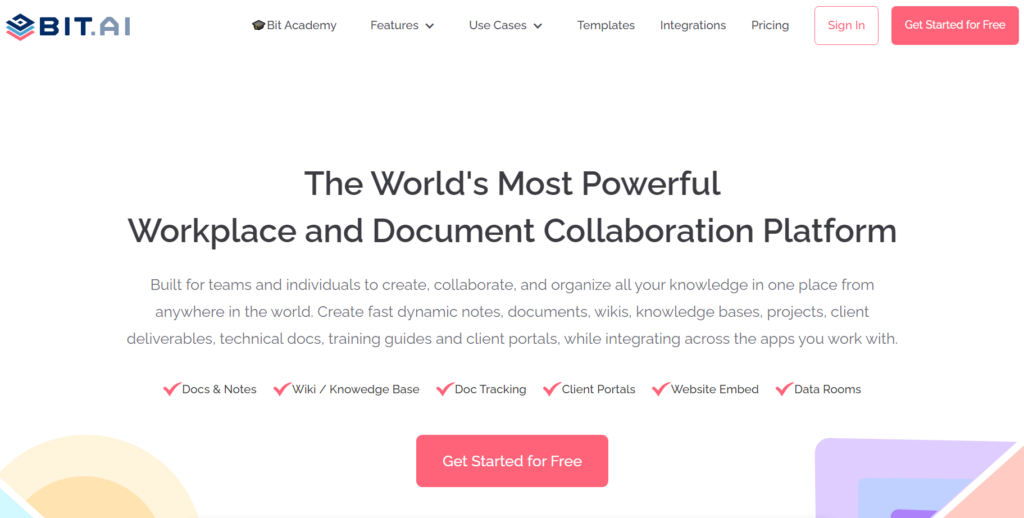
As a collaborative tool, Bit AI facilitates the type of live collaboration that can take place on Google Drive documents. Using Bit.ai, students and educators can collaborate on multimedia documents shared across the platform. However, it has much more to offer than just text and images.
There are many options for creating documents, including text and images, embedding videos, adding cloud files, adding music files, and more.
Bit.ai integrates with nearly everything, including Google Drive, OneDrive, and Spotify. Live chat is even available for collaboration between collaborators.
Its “workspaces” function allows educators to create different virtual classrooms and add students to them. It is possible to create interactive documents using visual web links, presentations, videos, social media posts, surveys, attachments, and more.
In real-time, students can work together on these. As part of Bit.ai, teachers can also evaluate assignments, provide comments, and provide individual feedback to students.
2. Elink.io

Researchers can use Elink.io to automate their content with the use of artificial intelligence. Researchers can easily save content from the web with Elink. Researchers can utilize it to store article links, cloud files, videos, social media posts, and much more.
There is also an extension for Chrome that makes bookmarking easier with Elink. It is possible for researchers to add their own notes or voices to the title and description. With Elink, you can create and share research links as a newsletter and it has an easy-to-use interface.
Elink users like to embed it in their sales content, marketing documents, research documents, training manuals, reports, eBooks, lesson plans, and much more. You will leave your audience with an impression, regardless of whether they are colleagues, clients, partners, followers, students, etc.
3. Wizdom.ai

Wizdom.ai is an AI-powered software that provides insights to make the right and impactful decisions.
It provides wisdom with its powerful artificial intelligence system that can monitor, analyze, and interpret billions of data points. In this way, this platform provides actionable insights for decision-making to everyone including, governments, institutions, researchers, and funders.
The team of data scientists at Wizdom.ai is continuously improving this AI system with big data and data science to improve decision-making in various dimensions. Right now, this AI system works as an intelligent research assistant and provides comprehensive research intelligence.
Furthermore, it provides rare insights into global research and assists in publication with the help of big data. Moreover, it provides detailed analytics to improve your funding performance. Above all, it provides intelligent foresight about global public policy changes.
4. GanttPRO
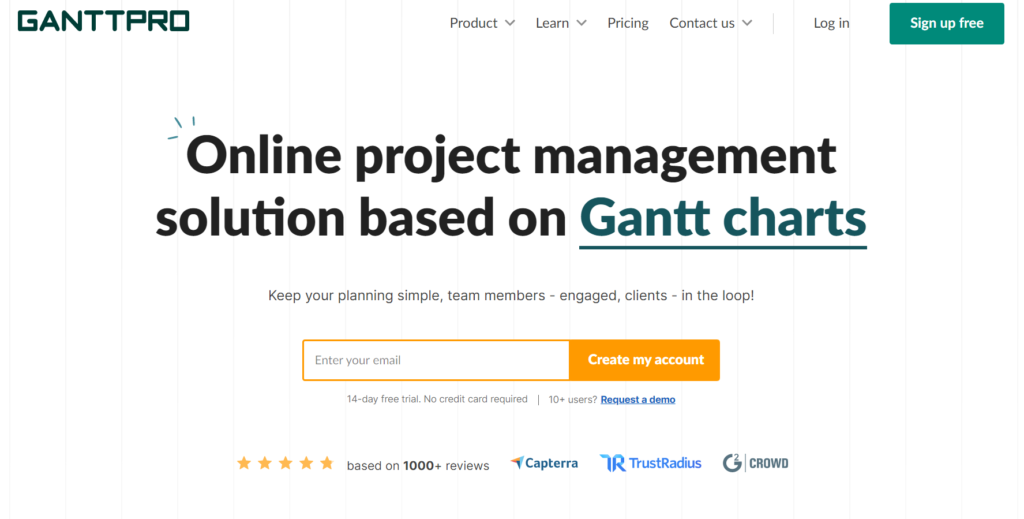
GanttPRO is an advanced cloud-based project management software that uses the Gantt Chart method to provide easy, hassle-free, and intuitive organization and management of projects, tasks, and assignments. With its robust toolset, users can create unlimited projects, subtasks, and assignments that are highly customizable and flexible.
For startups, businesses, and enterprises whose core functions depend on collaboration, intensive planning, and aggressive scheduling, GanttPRO is ideal. You can view your plans from several perspectives with GanttPRO, including Gantt charts, grid views, board views, and portfolio views.
A number of features are available in its planning tools, such as custom columns, dependencies, filters, milestones, project calendars, auto-scheduling, and task hierarchy. There are collaboration-ready features for taming tasks, managing projects, collaborating with teams, managing resources, and managing time.
5. Grammarly
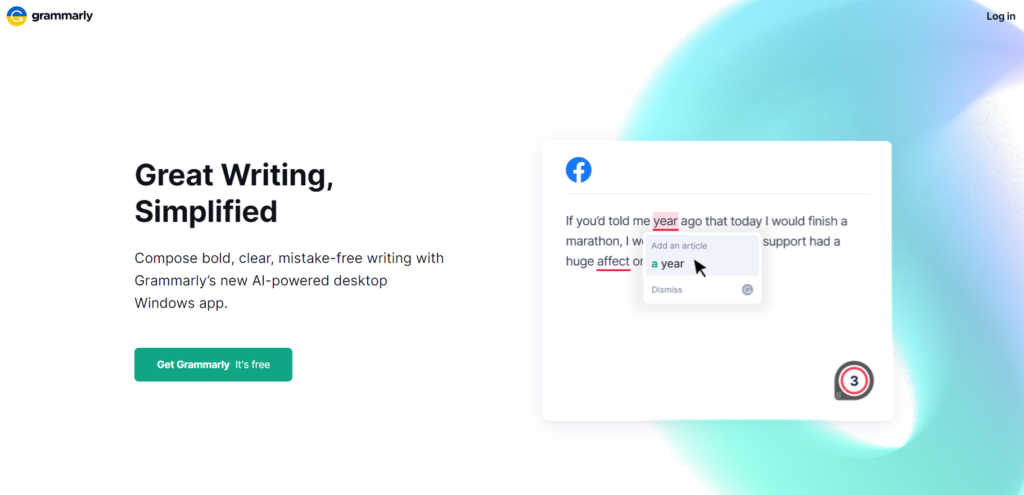
Most academics have difficulty editing their written work for grammar and spelling errors. When it comes to artificial intelligence (AI) technologies, Grammarly is among the finest for researchers. Your study paper will seem professional and free of errors if you use this to check for typos and grammatical mistakes.
More than 250 different forms of grammatical problems may be detected by this program in your study. This artificial intelligence tool’s standout feature is its capacity to include both a plagiarism checker and a tone detector.
6. Google Scholar

Google Scholar is the finest AI Software for Researchers for academic products. It allows for a brisk and comprehensive search of several academic sources at once. Researchers have quick and easy access to a wide range of information, including works, citations, authors, and publications.
Some of Google Scholar’s most appealing qualities include its user-friendliness, its ability to search across several databases, and the ease with which users may establish public author pages.
7. Semantic Scholar
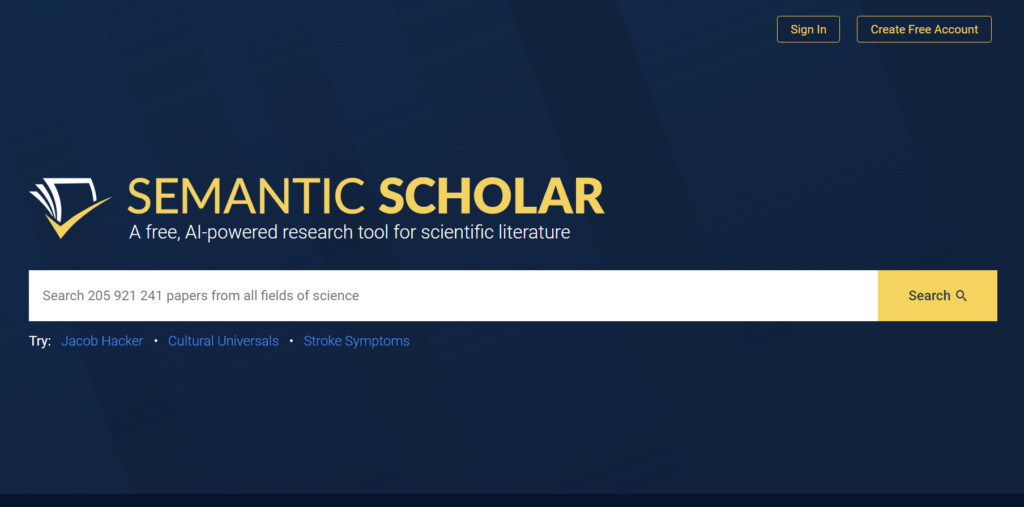
Semantic Scholar, is the finest AI Software for Researchers which is developed by the Allen Institute for Artificial Intelligence, and is a free tool for scholarly journals. Their goal is to help researchers avoid information overload by making the best of what’s available in the world’s scientific literature more accessible.
Semantic Scholar is a service that summarizes research papers into a single line. It was created in part to solve the problem of having to read too many titles and abstracts on a small screen. Since it is estimated that barely half of the three million scientific papers published year actually get read, this initiative aims to remedy that.
By using AI to distill a paper into its essential parts, a new “abstract” version of the work can be generated. To complement the standard techniques of citation analysis with a layer of semantic analysis and to extract important figures, tables, entities, and venues from papers, this research employs a combination of machine learning, natural language processing, and machine vision.
8. Iris.ai
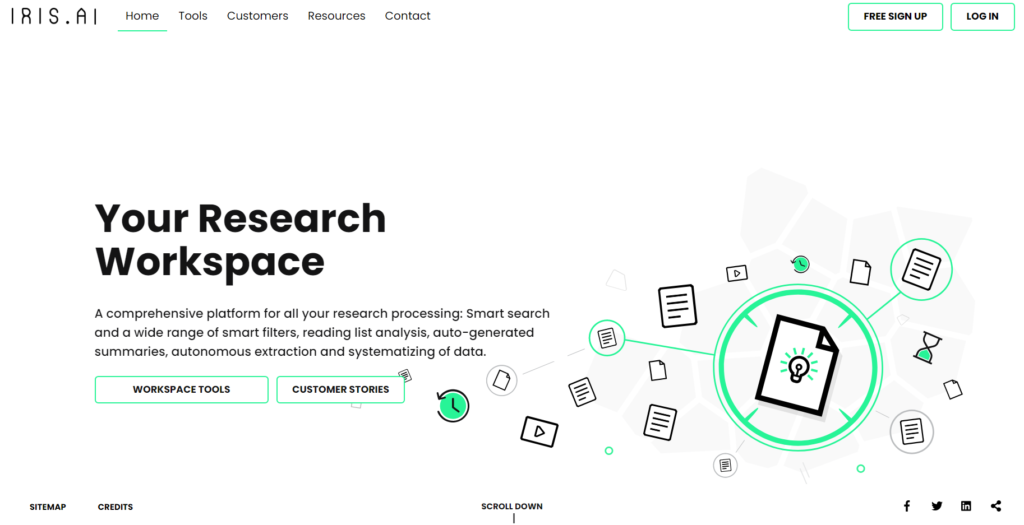
Iris.ai is artificial intelligence (AI)-driven science assistant that provides researchers in the exploratory stages of a new project with a suite of process tools designed with them in mind. By using machine-extracted keywords, contextual synonyms, and hyponyms, Iris.ai creates a “fingerprint” of your issue statement or the abstract of the paper, which is then matched against more than 100M Open Access papers & patents.
It’s a useful AI research tool for conducting a semi-automated literature review and for managing a big collection of documents. With the help of the tool, a user can iteratively reduce a corpus of up to 20,000 documents to a manageable reading list. The Focus procedure makes use of a tool that makes suggestions for what should be included and what should be left out of the first corpus in order to facilitate fast and accurate iterative filtering.
9. Genei.io
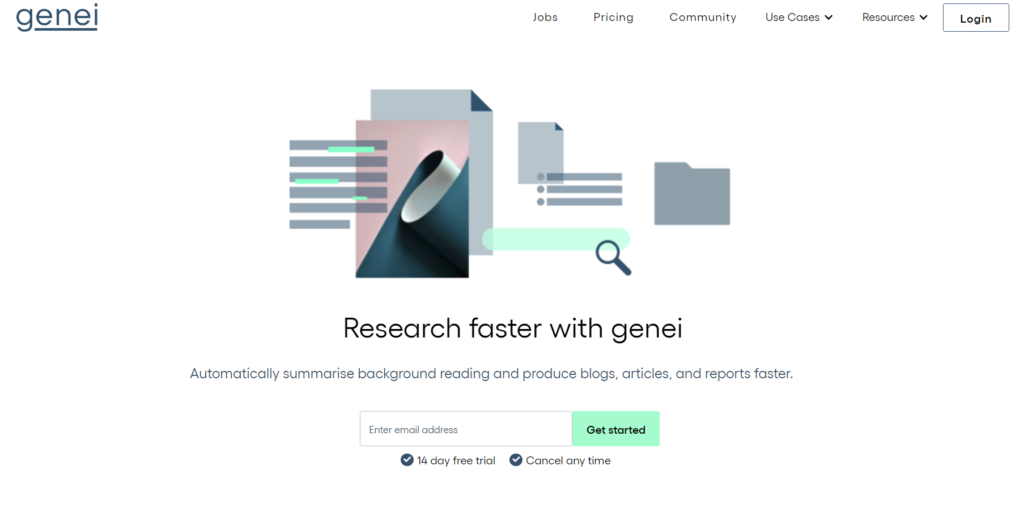
Simply put, Genei.io is a useful tool. It is, at its core, a piece of software that applies Natural Language Processing (the same technology that drives Siri, Alexa, and Google Translate) to web pages and then reports back to you, the user, what it has found. Genei has shown to be an effective method of keeping track of paper notes and adding new ones, all while providing quick summaries of the most important ideas.
Genei is a tool that combines a paper’s abstract and entire text to highlight just the most relevant material. Among the very best summary services I have used, this one is fantastic. Whenever you have a question or concern, the genei.io staff will get in touch with you right away. Incredible, out-of-this-world adventure. Using Genei.io has greatly facilitated my study and reduced the amount of time I have to devote to it.
10. Scrivener

Word processor and outliner, Scrivener is aimed squarely at writers. Scrivener is a software program that helps you keep track of your writing, notes, and metadata. The user can categorize their thoughts, ideas, sources, and even entire documents for quick retrieval and review.
Scrivener has structure examples for both fiction and nonfiction books. When finished writing, the user can send the document to be formatted in a word processor, screenwriting program, desktop publishing program, or Text.
There is a corkboard where you can organize your files by dragging and dropping virtual index cards, an outline, a split screen mode where you can work on multiple projects at once, a full-screen mode, and the option to export text into a variety of document formats.
Connections between sections of a text, “snapshots,” and the capability to add several keywords to each sections of text in order to facilitate sorting by keyword.
How is AI used in research?
AI is used in research to help automate and speed up the process of data collection and analysis. This allows researchers to focus on more important tasks, such as developing hypotheses and interpreting results. Additionally, AI can be used to identify patterns and trends that would be difficult for humans to find. As AI technology continues to develop, it is likely that its use in research will become even more widespread and essential.
AI Research Tools Wrapping Up
In conclusion, AI tools have the potential to revolutionize research. They can help us process and make sense of vast amounts of data, identify patterns and trends, and make predictions. However, AI tools are not perfect. They are biased by the data they are trained on and the assumptions made by their creators. Therefore, it is important to use AI tools with caution and to interpret their results critically.
Patryk Miszczak


